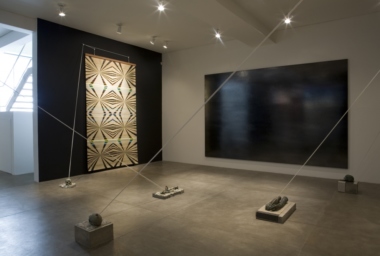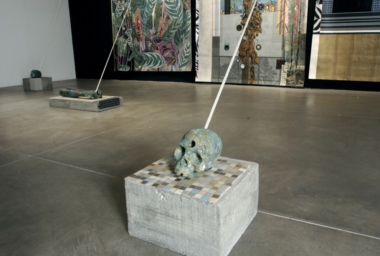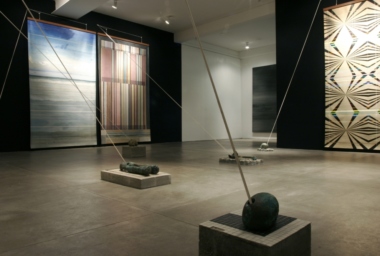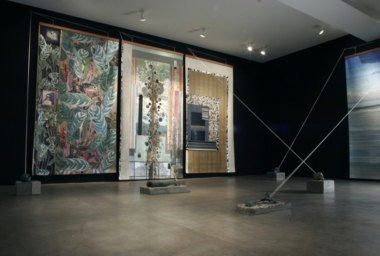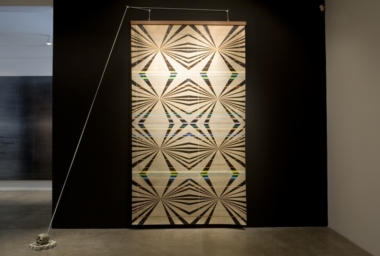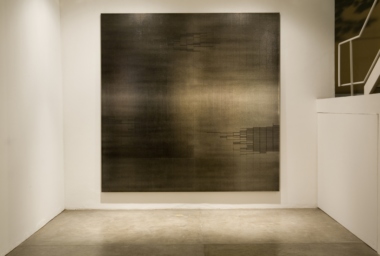Galeria Fortes Vilaça has great pleasure in presenting Luiz Zerbini’s Trepanações e Outros Artifícios [Trepanations and Other Artifices]. This series of new large-scale paintings shows how Zerbini moves between figuration and abstraction with the skill that has made him one of the most respected painters in the country. In this recent production, the artist explores common issues in the world of painting like materiality, light, transparency and unexpected optical effects.
In the triptych O Suicida Alto Astral [The Up-beat Suicidal], the structural stability of the canvas fixed to its support is done away with; Zerbini fixes only the upper part of the canvasses, leaving the lower parts loose. In each of the parts one can see a different painting; figurative images are placed alongside detailed abstract-geometric forms. Models of human bones and skulls with small holes in them (trepanation holes) are placed on the ground and connected to the canvasses by long cords, which complete the work. The same thing occurs in three other large scale works, which flirt with Op Art.
Minha Última Pintura [My Last Painting] seduces the onlooker through paradoxically being the most synthetic of the works on show and at the same time the most exuberant. It is a gigantic canvas painted in intensely shiny silver that reflects the surroundings and the other works on show. It is a work that suggests a game of uncertainties based on the tension between what it shows/reflects and what is hidden, depending on the position of the onlooker in the exhibition space. Minha Última Pintura is like the dark mirror from Truman Capote’s short-story Music for Chameleons, the “eyes look at it, distracted – they are attracted to it against their will […] The power that it has is thus frivolous […] when we look at it for long enough […] it becomes a strange silvery-blue, on the threshold of secret visions; […] we feel as if we are about to journey through the mirror.”
For Zerbini, the idea for these works is based on the fact that an artist’s last work is often revealing: “In my case, I decided to bring forward my last painting, I managed to foresee it, perhaps in order to be able to discuss it. It is pure philosophy; it is a painting that is abstract, figurative and conceptual at the same time. It is what you want it to be: silent, poetic and reflexive”.
Seeing new work by Zerbini is always a unique experience. The artist constantly multiplies the formal possibilities related to his painting and rejects any potential stagnation of pre-established formulae, so making it difficult to define any linearity in his production. Luiz Zerbini’s motto is constant change.
In 2006 the artist published the book Rasura in collaboration with the publishing house CosacNaify. Presented as a notebook, Rasura articulates itself as a guide to follow the artist’s creative process, as well as to show his production since the 1980s.
